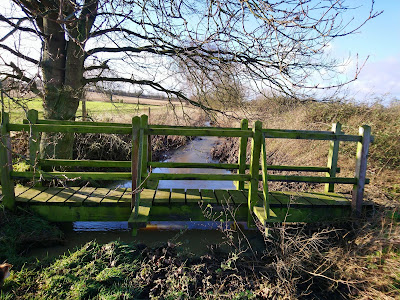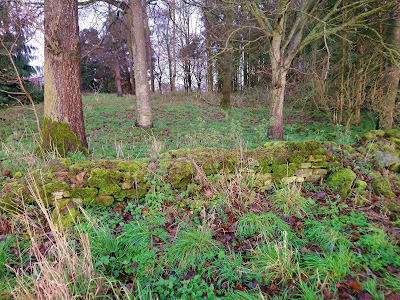 |
| St Mary's Church Welford |
The second leg of The Shakespeare's Avon Way and we are starting from St Mary's Church in Welford.Located on the River Avon border between Leicestershire and Northamptonshire.
After 'Storm Bella' did her worst overnight it is calm and bright. We are under no illusion how boggy some of the parts are likely to be. Hopefully the floods won't be bad enough to stop the intended route?
 |
| Flooded Fields ...... |
We are not far out of Welford when we pick up the Grand Union Canal. The Welford Arm is a short, 1 mile, waterway leading to the village of Welford. The canal was opened in 1814 and originally built as a navigable feeder, linking the Welford Reservoir and Sulby Reservoir to the Old Grand Union Canal.
What is this we see? A dam seems to have been created, surely not Beavers ?? I suspect with the the high water and stormy winds the old reeds have all been dredged up over the outlet pipe.
For this part of the walk we don't seem to be particularly close to the River Avon. Although we are passing close to the village of Stanford On Avon which is reassuring.
It is nice to leave the sodden fields and take the road that leads to our next village Clay Coton. Either side of the road there are impressive pillars giving distances to places nearby.
 |
| Distance markers |
 |
| Clay Coton |
Sadly one of them seems to have lost the globe off of the pillar. Our water problems were far from over though.... The road into Clay Coton was flooded with several inches of water. No alternative but to walk through it, the result being pretty wet feet. A couple of cyclists coming the other way seemed to make much better progress than we did though.
There are some lovely properties along the road too. The village is dominated by the former Church of St Andrew built in 1340. It fell into disuse in the 1950s and was renovated as a private house in
2000. However, the surrounding graveyard still has public access. All of which are flooded out today.
This will be our starting point for the next leg of the journey. Hopefully it will be a bit drier. But for now we are heading away from the Shakespeare's Avon Way. More saturated fields await us.
 |
| A handy bridge for crossing the swollen river. |
 We cross the A14 once gain and further on to Bridge 31 on the canal picking up the Jurassic Way footpath. The path ahead is very clear and we are approaching the Hemplow Hills.
We cross the A14 once gain and further on to Bridge 31 on the canal picking up the Jurassic Way footpath. The path ahead is very clear and we are approaching the Hemplow Hills. It is a slog through the mud to reach the woodlands. It is an even harder climb when we get there as the path becomes steeper and stickier. Looking back there are fantastic views of Honey Hill and wonderful rolling countryside.
Hemplow Hills A Christmas Donkey
Leaving behind the Hemplow Hills it is the final part of the walk and back to the starting point at Welford.
It is mostly by road and then through a small housing estate. Seems that a few other walkers are returning back to their cars as the light starts to fade.























































